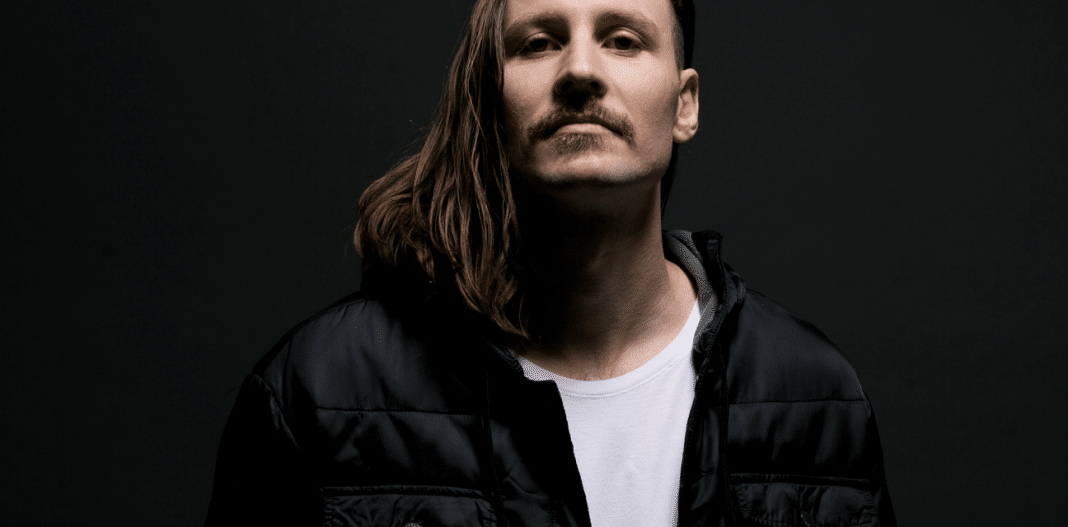In Egyptrixx tracks, there are often sounds that seem to be a reaction of material, like sharp noise from steel. What do you want the music to sound like?
I’m not too committed to it but I think there’s an element of rejection of high fidelity in all of my music. I don’t use a lot of high performance equipment or am particularly occupied with the idea of using instruments the way they’re supposed to be used – which is becoming kind of a passé thing anyways with like modular synthesizers. I’m interested in art that uses kind of common or low material. I like [visual artists like] Donald Judd, Richard Sierra – people that use steel, concretes and rubber.
You said you’re not very interested in high fidelity. On another level, some music, especially the tracks on A/B Til Infinity, sound pretty polished, like HD. It has something ‘hyper digital’, in a way. In comparison, your new album almost sounds analogue.
It’s a mix. I engineered the music on this record a little bit differently. There’s a little bit more texture. It’s taking some of the energy and the impact from the live performance which is quite an intense, overwhelming thing. The main kind of material inspiration of this album was the idea of this vastness of trash. The main inspiration from the record comes from the North Pacific Gyre – this floating masses of microplastic garbage in the pacific ocean and I really wanted the record to feel like these quite coagulated bergs of trash. I wanted it to feel really dense and piled on top of itself and spontaneous and kind of like littered. That’s why the sound design is really like stacked and almost overdone at times in the record. I wanted people to feel the physicality of junk.
Video: Egyptrixx – Boiler Room NYC DJ Set
Physicality seems to be pretty important in your projects. On early Egyptrixx releases, you can find references to Ghetto House, which is pretty physical dance music. You also still produce club tracks, for example with a project called Limit in collaboration with L-Vis 1990. There seems to be less direct influences of club music on the new album.
Obviously, most of the sounds in Egyptrixx music come from the same tools that you make club music with: drum machines, synthesizers or vocoders. There were just a few basic elements of how club music feels, how it’s built, transmitted, how it’s listened to and experienced, that formed the building blocks of the project. There’s a duality, a dichotomist parallel within club music that always really grabs me. That moment when all of these neon hypercolor lush sounds disappear and then you get pummels in a big club on a big sound system – that’s a really powerful feeling, that exists in all the different subgenres of club music and I love that! It’s really accelerating. It’s almost something that exits on an explicitly visceral level. It’s hard to even describe it with words, it’s something you have to feel. My intention for the project is to exist around these essentialist ideas within club music. I’ve tried to get that in different ways without just making tracks with drops but maybe coming at that same kind of micro-experience from different angles, achieving it in different ways.
There is a lot of music at the moment that is radically based on these micro-arrangements of tension – like tracks by Lotic or other people around the Janus collective. It is pretty reflective music in its deconstructivist approach because it constantly challenges body and mind.
I really like a lot of the releases that Janus does. I feel like there’s a few artists that are exploring the same kinds of questions right now. And it’s interesting because club music is such purposeful and functional music. It’s music to provide this backdrop for certain types of behaviour like dancing and moving. I’m not sure exactly where Egyptrixx music lives. It seems like a self-indulgent thing to take this music, go into clubs and kind of like force people to think about it for an hour or two hours or whatever (laughs). It seems now like my performances are living in slightly different places with slightly different expectations from music. But like I said – all the source material comes from club music and the interactivity between the audience and the artist and the space. I think it’s important to not exalt or alienate the artist too much. The whole club setting is not just about the music, the DJ, the producer. It’s about everyone, you know. It’s about all the people there, about the energy, about different kinds of ideas, that germinate within that environment.





